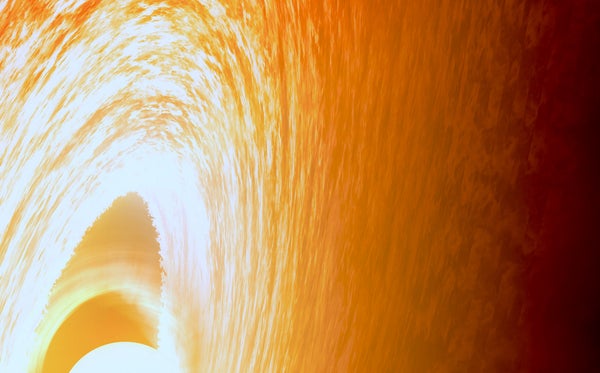This article was published in Scientific American’s former blog network and reflects the views of the author, not necessarily those of Scientific American
Moon Blobs
The origin of Earth's Moon has long been a puzzle. Solving this conundrum has deep implications for the nature of planetary formation, Earth's geophysical and geochemical history, and for that elusive quality of we call habitability for small rocky worlds across the Universe.
In essence; the question is how the rocky parts of the Moon and Earth got to be so similar in elemental composition. The most favored hypothesis is that an early version of the Earth was hit by another planet-scale object some 4.5 billion years ago. That 'Giant Impact' could have mixed up material from the two bodies, and as the Moon assembled from the detritus it would naturally share a composition with the larger Earth.
On supporting science journalism
If you're enjoying this article, consider supporting our award-winning journalism by subscribing. By purchasing a subscription you are helping to ensure the future of impactful stories about the discoveries and ideas shaping our world today.
But getting all aspects of this picture to fit with the observed properties of the Earth-Moon system is not so easy. That leaves room for other possibilities, such as the 'synestia' idea where both the Earth and Moon formed from the same spinning cloud of molten filth left from an even larger proto-planetary collision. Now another proposal has been made by Hosono et al. where there was indeed a collision involved, but the Earth at that time was already a molten world - an ocean of magma. Rather than a Giant Impact this might have been a Giant Splash, making it much easier for blobs of material from the early Earth to be flung into orbit to coalesce as the Moon, with its near identical composition.
The challenge of decoding what's right under our noses is a sobering reminder of the complex questions involved in learning about planetary histories.
Collapsars
As I wrote in a recent piece here, the origin of certain heavy elements on Earth is getting a lot of astrophysical attention these days. Researchers are particularly focussed on the r-process elements, thought to be forged in environments of intense neutron flux. Since the gravitational-wave detection of neutron star collisions these 'kilonova' events have become a hot favorite (no pun intended) for producing much of the gold, platinum, and uranium in the Galaxy.
But there are other options. A new study by Siegel, Barnes, and Metzger published in Nature suggests that an even rarer astrophysical event - the 'collapsar' - might actually fit the bill for dominating r-process element production. A collapsar is a rapidly spinning massive star that winds up collapsing and creating a supernova. As part of this process a disk of material forms, spinning and accreting on the central mass. That disk resembles the environment in neutron star mergers where lots of r-process elements are thought to be produced. In fact, as this research shows, a collapsar event might expel even more of these heavy elements. The upshot being that, despite their rarity, collapsars could produce more than 80% of the r-process elements in the Universe.
Exactly which phenomenon will win out in the end remains to be seen. The heaviest elements play critical roles in the formation and geophysical history of planets, so understanding their origins has broad implications.
Long Planets
There's a dirty little not-so-secret secret about exoplanets: The vast majority of our discoveries to date have been strongly biased towards worlds on comparatively small, short-period orbits. The simple reason being that techniques like transit detection or radial-velocity measurement generally need to catch repeat orbits, or have very long data timelines in order to allow confidence in the reality of the planets that show up.
But it is these longer-period planets - akin to worlds like Jupiter or Saturn in our own solar system - that are essential for testing our ideas of planet formation and for filling in the blanks on whether a system has the right stuff for supporting life on any of its worlds.
Finding planets like these takes patience and forward planning. Now a study by Rickman et al. has yielded the fruits of 20 years of astronomical observation using Geneva University's EULER telescope at La Silla Observatory in Chile. Specifically, the team has revealed a haul of five newly-identified objects circling their stars with orbital periods of between 15 and 40 years. Three of these are hefty gas-giant worlds, two are likely brown-dwarf or sub-stellar objects weighing in at more than ten times the mass of Jupiter.
Slowly we're beginning to fill in the gaps in our knowledge of all exoplanets, not just the most convenient ones.
